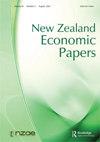新西兰税收转移制度中的收入保护
IF 0.7
Q3 ECONOMICS
引用次数: 0
摘要
本研究报告调查了个人失业时新西兰福利制度提供的收入替代率。我们利用新西兰财政部的微观模拟模型,基于2018年4月至2019年3月的税收和转移规则,用于各种家庭场景。结果表明,有孩子的人以及收入较低和中等工资的人的替代率更高(超过50%)。这些发现与政策制定者高度相关,因为它们提供了福利制度充分性的指标,并可以为潜在失业保险计划的设计方面提供信息。本文章由计算机程序翻译,如有差异,请以英文原文为准。
Income protection in the New Zealand tax-transfer system
This research note investigates income-replacement rates provided by the New Zealand welfare system when an individual loses their employment. We utilise New Zealand Treasury’s microsimulation model, based on tax and transfer rules from April 2018 to March 2019, for a variety of household scenarios. Results indicate that replacement rates are higher (above 50 percent) for those with children and for those earning low and median wage rates. These findings are highly relevant to policymakers, as they provide indicators of the adequacy of the welfare system and can inform design aspects of a potential unemployment insurance scheme.
求助全文
通过发布文献求助,成功后即可免费获取论文全文。
去求助
来源期刊

New Zealand Economic Papers
Economics, Econometrics and Finance-Economics, Econometrics and Finance (all)
CiteScore
1.20
自引率
0.00%
发文量
17
 求助内容:
求助内容: 应助结果提醒方式:
应助结果提醒方式:


